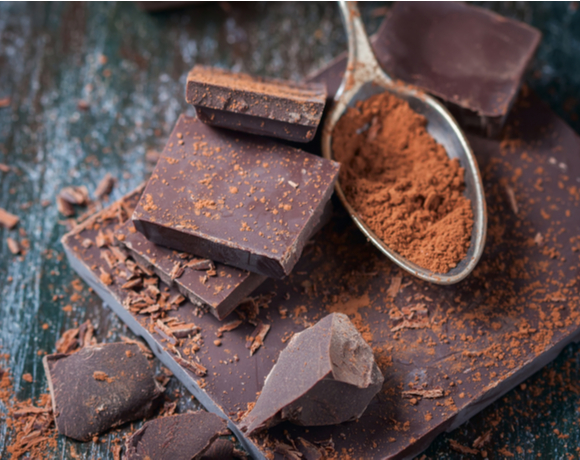
Food has become a central part of holiday celebrations, so much so that some holidays aren’t complete without the foods associated with them. Think about it – there’s turkey and stuffing for Thanksgiving, of course. For Halloween it may be candy corn (or just a lot of candy!), and Easter is filled with marshmallow peeps, jelly beans and chocolate bunnies. With Valentine’s Day approaching, there’s nothing more quintessential than chocolate. Valentine’s Day is all about celebrating LOVE and for centuries we’ve expressed our love through food.
How much do you really know about chocolate? Let’s start with its origin. Chocolate comes from the cacao bean that grows in pods on the cacao tree that is native to Central and South America and cultivated in many other locations around the equator. Chocolate is the most popular sweet treat in the world and we consume more than 3 million tons of cocoa beans per year. Now that’s a lot of chocolate!
But what is it about chocolate that elicits a passion that goes beyond the love of a sweet treat? Why does it make us feel so darn good? Many people report “feeling good” after indulging in chocolate, especially because it contains more than 300 chemicals that may account for those feelings. Caffeine, a stimulant, is present in small amounts and combined with theobromine, a weaker stimulant also found in chocolate, may account for the “lift” experienced when eating it. Believe it or not, there’s also some evidence that chocolate may stimulate the brain in the same way cannabis does and it may also have an effect on mood regulation through the stimulation of dopamine, serotonin, and endorphins.
Beyond creating a great mood, chocolate benefits our heart and brain, the trifecta of a Happy Valentine’s Day! Dark chocolate in particular contains phytonutrients which work as antioxidants and other ingredients that may lower the risk of cognitive decline as we age.
Now that we know the why, let’s talk about the how. Sweet milk chocolate comes with a few ingredients that we want to limit such as fat, sugar, and calories but dark chocolate (more than 70% cocoa) contains flavanols that may benefit the brain and heart and contains much less sugar. So go ahead and incorporate small amounts of dark chocolate into your family’s Valentine’s Day traditions! By using dark chocolate you can expand the palate with the taste of actual chocolate instead of the sugar rush of chocolate candy. Provide a fun experience for your kids such as drizzling dark chocolate over fresh fruit like bananas or drizzle over popcorn. A little dark chocolate over nutritious fruit or a whole grain snack will surely help your family feel the love this Valentine’s Day!
This article originally appeared on Red Tricycle.



Leave a Reply
You must be logged in to post a comment.